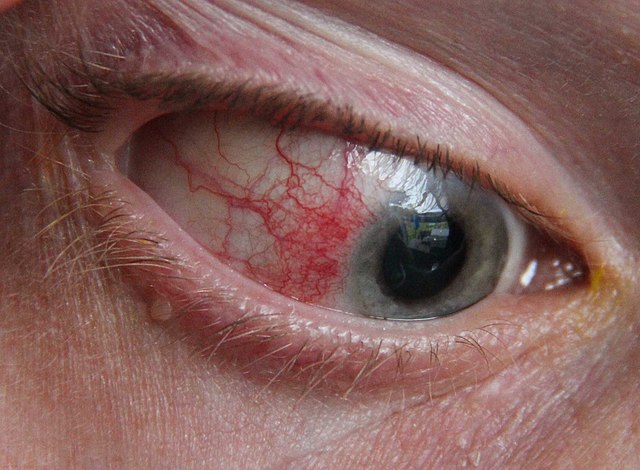Eye Care > Diseases of the Eye > Episcleritis
Episcleritis is an inflammatory condition of the connective tissue between the conjunctiva and sclera, known as the episclera. The eye’s red appearance makes it look similar to conjunctivitis, or pink eye, but there is no discharge or tearing. It usually has no apparent cause; however, it is sometimes associated with systemic inflammatory conditions such as arthritis, lupus, and inflammatory bowel disease. Rosacea, herpes simplex, gout, tuberculosis, and other diseases are also occasionally underlying causes.
Women are typically affected by episcleritis more frequently than men. It characteristically occurs in people who are in their 30’s and 40’s and is often a recurrent problem.

Episcleritis is diagnosed with a slit lamp examination. The eye care practitioner will look for discharge, pain, and involvement of the underlying sclera to rule out other problems.
Treatment for episcleritis is usually not needed. Chilled artificial tears can be used to soothe the eye and reduce mild inflammation. In more severe cases of episcleritis, mild steroids and anti-inflammatory medications are prescribed to reduce inflammation.
| Cookie | Duration | Description |
|---|---|---|
| cookielawinfo-checkbox-analytics | 11 months | This cookie is set by GDPR Cookie Consent plugin. The cookie is used to store the user consent for the cookies in the category "Analytics". |
| cookielawinfo-checkbox-functional | 11 months | The cookie is set by GDPR cookie consent to record the user consent for the cookies in the category "Functional". |
| cookielawinfo-checkbox-necessary | 11 months | This cookie is set by GDPR Cookie Consent plugin. The cookies is used to store the user consent for the cookies in the category "Necessary". |
| cookielawinfo-checkbox-others | 11 months | This cookie is set by GDPR Cookie Consent plugin. The cookie is used to store the user consent for the cookies in the category "Other. |
| cookielawinfo-checkbox-performance | 11 months | This cookie is set by GDPR Cookie Consent plugin. The cookie is used to store the user consent for the cookies in the category "Performance". |
| viewed_cookie_policy | 11 months | The cookie is set by the GDPR Cookie Consent plugin and is used to store whether or not user has consented to the use of cookies. It does not store any personal data. |